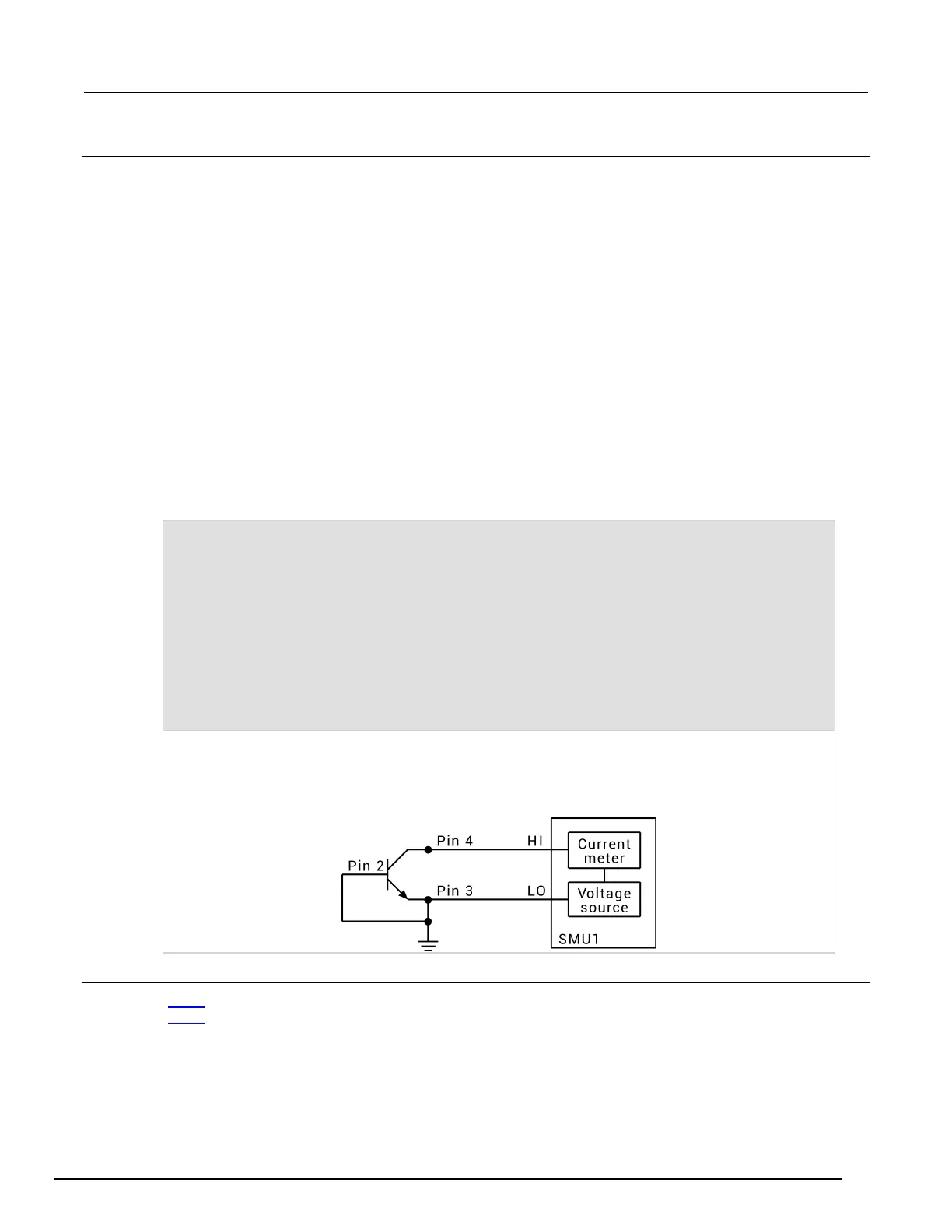-SCS Parameter Analyzer Reference Manual Section 13: LP
T library function reference
4200A-901-01 Rev. C / February 2017 13-37
Details
This command creates an entry in the measurement scan table. During any of the sweeping
commands, a measurement scan is done for every force point in the sweep. During each scan, a
measurement is made for every entry in the scan table. The measurements are made in the same
order in which the entries were made in the scan table.
The savgX command sets up the new scan table entry to make an averaging measurement. T
he
m
easurement results are stored in the array specified by the result parameter. Each time a
measurement scan is made, a new measurement result is stored at the next location in the result
array. If the scan table is not cleared, performing multiple sweeps will continue adding new
measurement results to the end of the array. Care must be taken that the result array is large
enough to hold all measurements made before the scan table is cleared. The scan table is cleared by
an explicit call to the clrscn command, or implicitly when the devint or execut command is
called.
When making each averaged measurement, the number of actual measurements specified by the
count parameter is made on the instrument at the number of seconds apart specified by the delay
parameter, and then the average is calculated. This average is the value that will be stored in the
results array.
Example
.
.
conpin(3, 2, GND, 0);
conpin(SMU1, 4, 0);
savgi(SMU1, res1, 8, 1.0E-3); /* Measure average */
/* current 8 times per */
/* sample; return results to */
/* res1 array. */
sweepv(SMU1, 0.0, -50.0, 25, 2.0E-2); /* Generate */
/* a voltage from 0 V */
/* to -50 V over 25 steps.*/
This example gets the measurement data that is needed to create a graph that shows the capacitance
versus voltage characteristics of a variable-capacitance diode. This diode is operated in reverse-biased
mode. SMU1 outputs a voltage that sweeps from 0 through -50 V. Capacitance is measured 26 times
during the sweep. The results are stored in an array called res1.
Also see
clrscn (on page 13-9)
devint (on page 13-13)
